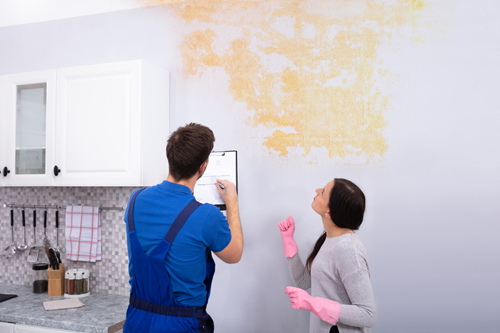Do's & Don'ts of Water Damages.
Do's & Don'ts of Water Damages.
Blog Article
We have stumbled on this great article involving Fire And Water Damage Prevention below on the internet and accepted it made sense to write about it with you on this site.

Though water gives life, water intrusion on components where it's not meant to be can lead to damages. It can peel off away surface areas as well as wear down the structure if the water saturates into your structure. Mold and mildew as well as mold also flourish in a moist setting, which can be unsafe for your health and wellness. Houses with water damage odor musty and old.
Water can originate from numerous resources such as typhoons, floodings, ruptured pipelines, leaks, as well as drain problems. In case you experience water damage, it would be excellent to know some safety and security precautions. Below are a few standards on exactly how to handle water damages.
Do Prioritize House Insurance Policy Insurance Coverage
Water damage from flood as a result of hefty winds is seasonal. However, you can also experience an unexpected flooding when a damaged pipe all of a sudden breaks right into your house. It would be best to have residence insurance coverage that covers both acts of God such as natural tragedies, and emergencies like broken plumbing.
Do Not Fail To Remember to Shut Off Utilities
In the event of a disaster, especially if you live in a flood-prone area, it would be recommended to shut off the primary electric circuit. This removes power to your entire home, preventing electric shocks when water comes in as it is a conductor. Don't neglect to turn off the major water line shutoff. When floodwaters are high, furniture will move around and cause damage. Having the primary shutoff shut off stops more damage.
Do Remain Proactive and Heed Climate Informs
Pay attention to emptying cautions if you live near a creek, lake, or river . Doing so reduces prospective property damage.
Do Not Neglect the Roof
You can avoid rainfall damage if there are no openings and also leakages in your roof. This will protect against water from moving down your walls and soaking your ceiling.
Do Focus On Small Leakages
A burst pipeline does not take place over night. You might observe bubbling paint, peeling wallpaper, water touches, water spots, or dripping noises behind the walls. Have your plumbing repaired before it results in large damage.
Don't Panic in Case of a Burst Pipe
When it comes to water damage, timing is vital. Thus, if a pipe bursts in your home, instantly closed off your main water shutoff to cut off the resource. Call a reputable water damages remediation professional for aid.
Water provides life, water intrusion on components where it's not supposed to be can result in damages. Houses with water damages odor old and musty.
Water damages from flood charges to heavy winds is seasonal. You might observe bubbling paint, peeling wallpaper, water touches, water spots, or trickling noises behind the wall surfaces. When it comes to water damage, timing is crucial.
Some Do's & Don't When Dealing with a Water Damage
DO:
Make sure the water source has been eliminated. Contact a plumber if needed. Turn off circuit breakers supplying electricity to wet areas and unplug any electronics that are on wet carpet or surfaces Remove small furniture items Remove as much excess water as possible by mopping or blotting; Use WHITE towels to blot wet carpeting Wipe water from wooden furniture after removing anything on it Remove and prop up wet upholstery cushions for even drying (check for any bleeding) Pin up curtains or furniture skirts if needed Place aluminum foil, saucers or wood blocks between furniture legs and wet carpet Turn on air conditioning for maximum drying in winter and open windows in the summer Open any drawers and cabinets affected for complete drying but do not force them open Remove any valuable art objects or paintings to a safe, dry place Open any suitcases or luggage that may have been affected to dry, preferably in sunlight Hang any fur or leather goods to dry at room temperature Punch small holes in sagging ceilings to relieve trapped water (don't forget to place pans beneath!); however, if the ceiling is sagging extremely low, stay out of the room and we'll take care of it DO NOT:
Leave wet fabrics in place; dry them as soon as possible Leave books, magazines or any other colored items on wet carpets or floor Use your household vacuum to remove water Use TV's or other electronics/appliances while standing on wet carpets or floors; especially not on wet concrete floors Turn on ceiling fixtures if the ceiling is wet Turn your heat up, unless instructed otherwise

I'm certainly very drawn to Safety Tips To Prevent Fire And Water Damage and I really hope you enjoyed our piece. I beg you take the time to distribute this entry if you enjoyed it. Thanks so much for taking the time to read it.
Report this page